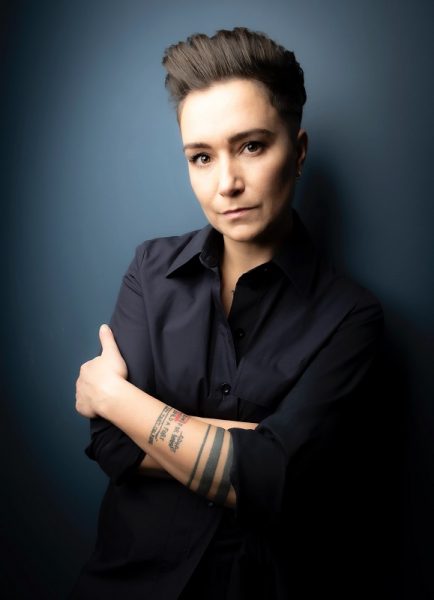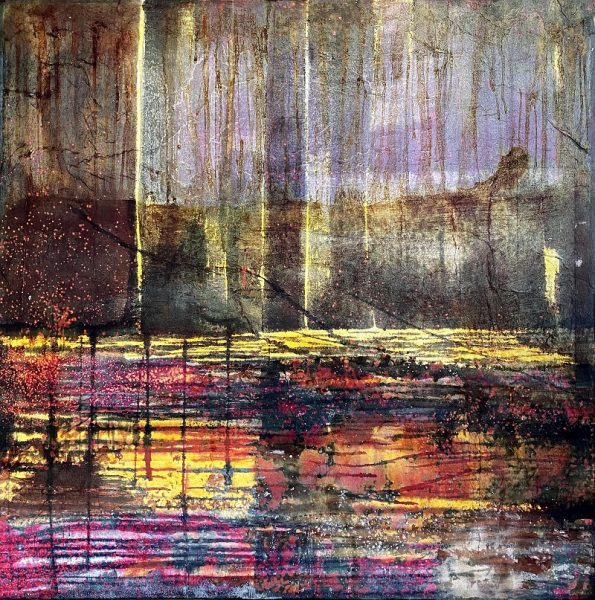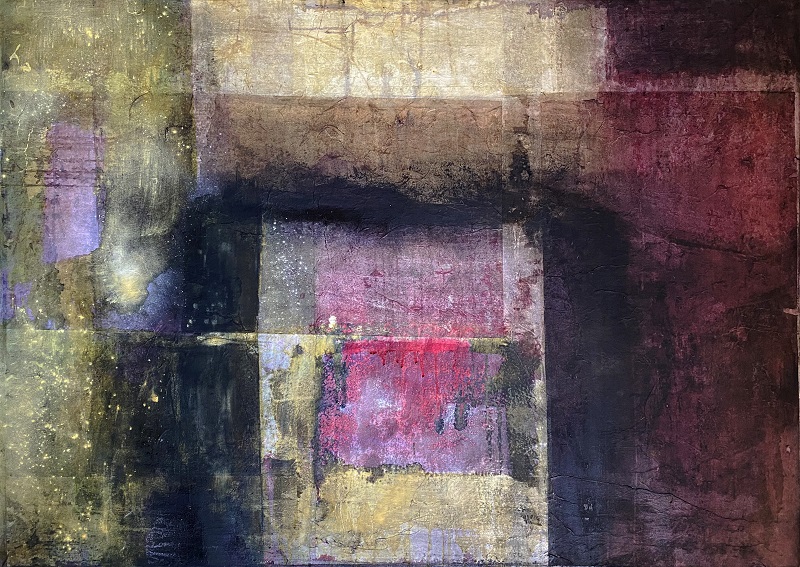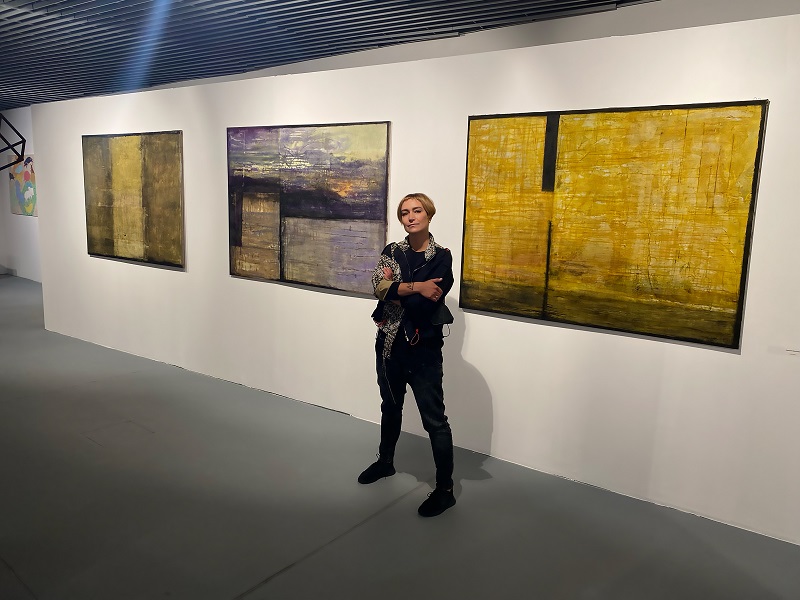RESEARCH EXCELLENCE INITIATIVE
FREEDOM OF RESEARCH – SCIENCE FOR THE FUTURE
“Freedom of research – science for the future” series consists of articles, interviews and short videos presenting research conducted by winners of the call for proposals
Katarzyna Hilszczańska, PhD
Towards ecological painting
| Olimpia Orządała |
Promoting an ecological approach to creative work is the main goal of the project “The Garden of floral delights / Polish Garden” by Katarzyna Hilszczańska, PhD, from the Institute of Fine Arts of the University of Silesia, winner of the competition “Freedom of Research” organised as part of the Research Excellence Initiative.
“I would like to convince the artist community to create ecologically, to use materials that do not contain heavy metals” admits the researcher. She creates vegetable dyes which she uses to paint pictures on Chinese paper glued onto a canvas. The pictures are inspired by nearby landscapes.

“The King of Paper”
In 2013, Katarzyna Hilszczańska, PhD spent a month-long artistic residency in China, where she met prof. Niel Malone of the University of Melbourne. The meeting resulted in and invitation to the Tokyo International Mokuhanga Conference in 2014, organised, among others, by the Tokyo University of the Arts. The conference concerned the ecological Japanese Mokuhanga woodcut technique, derived from the Ukiyo-e period – the period of, among others, Hokusai Katsushika.
“I really wanted to adapt this technique to our academic community at the University of Silesia” admits the laureate of the competition “Freedom of Research”. She adds that it was her first encounter with an ecological approach to art. It turned out that graphics can be created in an ecological way, not necessarily using very poisonous components.
Katarzyna Hilszczańska, PhD spent another artistic residence in China, where she visited the Xuan Paper Factory in Jing County, Anhui. Traditional Chinese paper is handcrafted from rice pulp, wood bark, sandalwood or some other type of wood.
It is very delicate and thin, but durable. The Chinese call it “the king of paper” or “paper of longevity” – explains the researcher.
Chinese paper from Anhui-Xuan province is inscribed on the UNESCO Intangible Cultural Heritage list. The production of one ream (which is not made by machines) takes about two years. There are many different types of paper, some recommended for dry techniques, others for wet techniques.
“I thought that if I want to paint on Chinese paper, It’s impossible to avoid technological challenges” admits the artist, “as painters, we can paint on canvases or even primed canvases and get the right colors, but we can’t be responsible for the quality of the materials used for priming the raw canvas itself. I wanted to eliminate the risk that the paint covering the first layer would contain harmful substances. I came to the conclusion that I can try using natural techniques to glue Chinese paper on the canvas. I started taking my first attempts which turned out very well. That’s how my own technology has developed”.

Silesian Gardens
The idea of the project “The Garden of floral delights / Polish garden” appeared in 2019, when Katarzyna Hilszczańska, PhD was preparing for the exhibition “Silesian Triptych” which was attended by employees from the Institute of Fine Arts and the Institute of Music of the University of Silesia. The aim of the project was to create three works depicturing Silesia.
“I associate Silesia with the years of my youth which I spent in the gardens, as well as with a Silesian woman who is a synonym of family” admits the winner of the competition, “At the same time, 2019 was the time when protests on women’s rights broke out in Poland. Therefore, I wanted to pay tribute to a Silesian woman, where, on the one hand, she is always a mother, a wife – a person who takes care of the entire home, but on the other hand, nowadays she is a liberated woman, working, down-to-earth and very concrete”.
The researcher decided to narrow down the topic to the plants only – she asked herself what the vegetable and flower gardens looked like, what is currently grown in Silesia? This idea resulted in the first series of three paintings made of plant dyes. For their production (e.g. by grinding, precipitating, cooking), the researcher uses a variety of plants, e.g. dahlias, poppies, peonies, irises, roses, aroniaes, as well as bark, roots and charcoal. One of the challenges faced by Katarzyna Hilszczańska, PhD is the appropriate impregnation of colours in the paintings.
“These are natural dyes and it is known that they will fade under the influence of light, temperature and other weather conditions” the researcher notes, “I am constantly working on impregnants that would be able to preserve the colours or partially stop the fading process. I try to choose the right ecological substances that can ensure colour fastness”.

Educational value
During an artistic residency, this time in Andalusia, Katarzyna Hilszczańska, PhD met a group of young divers who not only told her about calcite, but also brought her a mineral extracted from the bottom of the Alboran Sea.
“Using the appropriate tools, I ground it into white paint. This allowed me to obtain a white color that is essentially impossible to obtain from plants without the use of chemical additives” says the researcher.
Calcite became a pretext for the researcher to talk to local residents. “Their stories can influence the way I think about the painting, what dyes I can use, why these plants, not the others” the researcher notes, “Each trip brought different stories. In my artistic work, I take into account the nature of the landscapes that surround me, the history of the people I work with, as well as the set of dyes I have. There is always an element of curiosity: how my impression on a given landscape is combined with the material I obtained during the research”.
The artist allocated the funding received as part of the “Freedom of research” competition for another trip – this time in the vicinity of the Orlické Mountains in the Central Sudetes.
“The area which I visited turned out to be quite troublesome due to the close proximity of strictly protected areas, or areas included in the Natura 2000 programme. And here again, the invaluable help of the local residents was extremely useful. In addition to plants in these areas, I managed to obtain interesting clays and rocks from which dyes will also be made.
Conversations with the locals also bring educational value. They concern such questions as what art is all about, what can be gained thanks to it, and why toxic substances should be abandoned in favor of natural materials.
Nowadays, we should focus on ecology and try not only to change our lifestyle, but also to think about the techniques in which we work, what materials we use. It is certainly interesting in terms of education. My project’s goal is to pass this knowledge on. Perhaps in the future, it will be possible to establish a studio devoted to ecological painting” – says the researcher.






